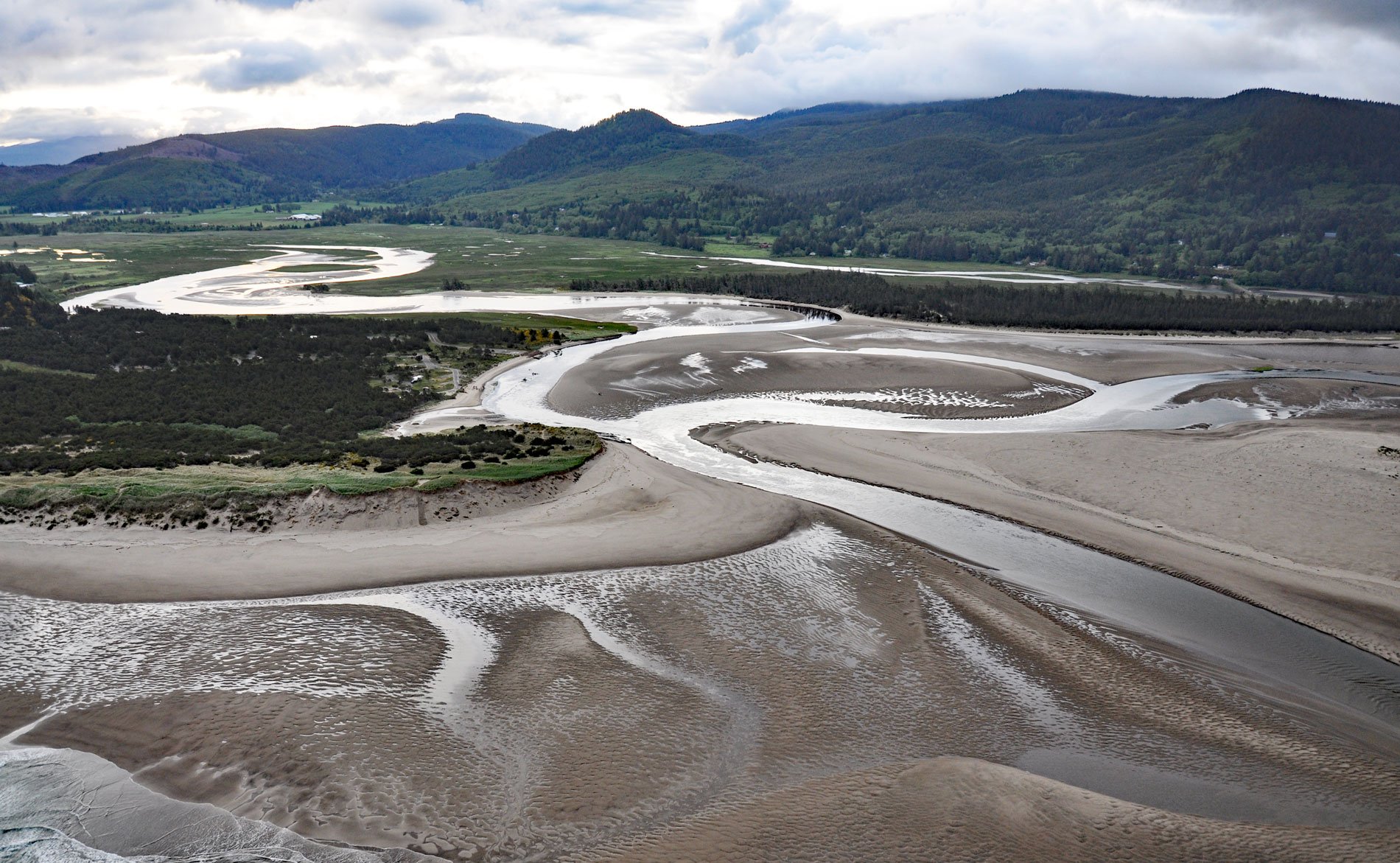Whalen Island is located in Sand Lake which is the estuary of Sand Creek that starts at an elevation of 770 feet (235 m) in the Oregon Coast Range and flows generally south-southwest for 8 miles (13 km) to the Pacific Ocean draining a watershed of 10,880 acres (4,403 ha), about 13 miles (21 km) south-southwest of Tillamook and 5 miles (8 km) north of Pacific City, Oregon. The relatively small watershed limits freshwater inflow and the estuary is formed by a sand bar at the river mouth rather than a drowned river valley like most other Oregon estuaries. Whalen Island consists of stabilized dune that protects an extensive salt marsh. Aerial photography of Whalen Island from the period between 1939 and the present shows a rapid progression from sands very sparsely vegetated with native dune species to dense and often nearly impenetrable forests of young trees and thick shrubs. The estuary can be divided into two subsystems: a highly dynamic marine subsystem to the west of Whalen Island and a more stable bay subsystem east of the island. Sand Lake is considered a natural estuary with relatively few alterations and shoreland development.
The mouth of Sand Creek was the traditional territory of the Nestucca group of the Tillamook people. The Tillamook traditionally lived along the coast from Tillamook Head in the north to Cape Foulweather in the south and extending to the summit of the Coast Range mountains. In 1788, Captain Robert Gray on the Columbia Rediviva was the first European to encounter the Tillamook. The tribe had a population estimated at 2200 at the beginning of the 19th century. In 1824 and 1829, they suffered high mortality from smallpox epidemics. In 1841, the arrival of Oregon Trail settlers resulted in conflicts over land and resources and skirmishes further decreased their population. By 1845, Charles Wilkes estimated roughly 400 Tillamook were remaining. Beginning in 1853, Superintendent of Indian Affairs Joel Palmer negotiated treaties with the western Oregon tribes. The treaties stipulated that a permanent reservation would be set aside for all of the western Oregon tribes; in exchange, the tribes would cede their lands to the United States. By 1875, the Coast Reservation ceased to exist, and the remaining tribes were removed to the Siletz and Grand Ronde reservations.
In 2000, the Clay Myers State Natural Area at Whalen Island was added to the Oregon State Parks system. The goal was to protect a relatively untouched coastal estuarine ecosystem that is a critical habitat for adult salmon migrating upstream to spawning habitats and for outbound salmon smolt leaving the inland fresh waters for the ocean. The site was purchased by a unique partnership between the Oregon Parks and Recreation Department, Oregon Watershed Enhancement Board, Federal Highway Administration, National Park Service, Tillamook County Board of Commissioners, and the Trust for Public Lands. The property is named for Clay Myers who was a longtime advocate for conservation and protection of Oregon’s land, beaches, and waterways. In 2014, Ecotrust purchased 357 acres (144 ha) of tidal marsh, mudflats, dunes, forested wetlands, and uplands at the south end of the Sand Lake estuary that had been diked and farmed for most of the 20th century. The property was the acquired by Oregon Parks and Recreation Department using Oregon Lottery funds and a National Coastal Wetlands Conservation grant from the U.S. Fish and Wildlife Service. Read more here and here. Explore more of Whalen Island and Sand Lake here:

